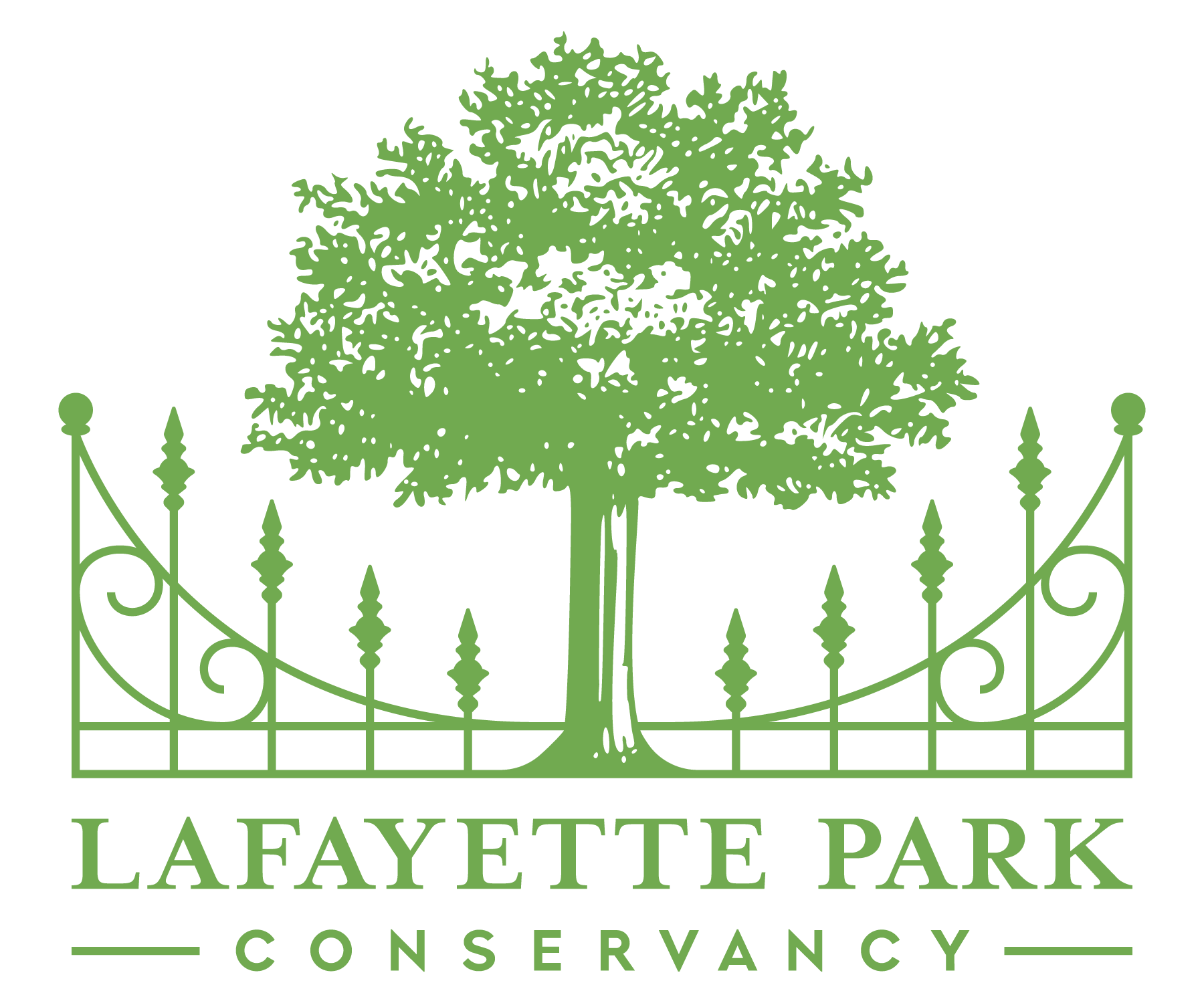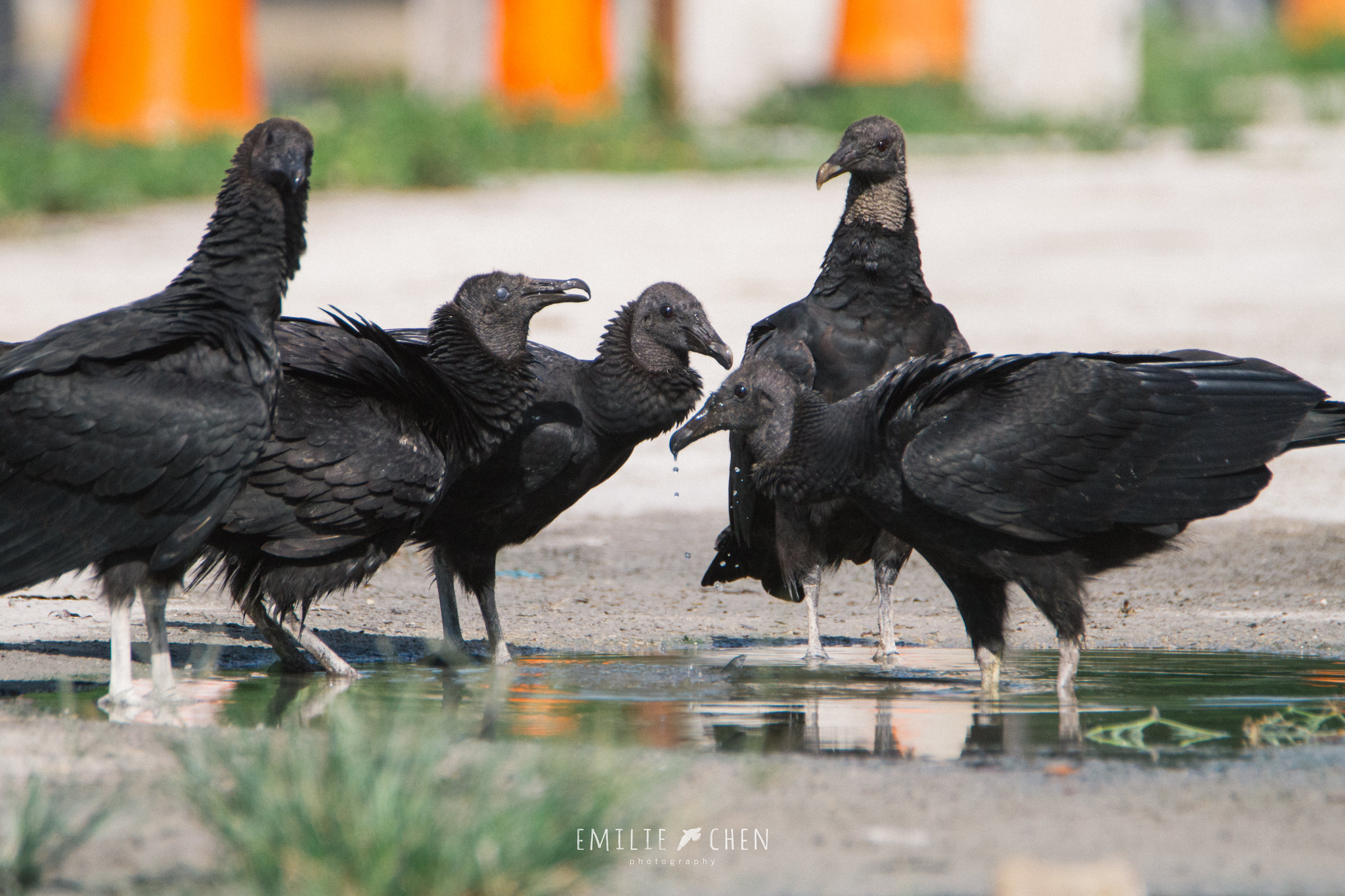BY KIERAN LINDSEY, PhD
As I walked through the neighborhood that day, the air wasn’t filled with the metallic squeal of dumpsters being lifted high above a clumsy automated truck. As such, the last thing I expected to see when I turned the corner was several members of the neighborhood waste management team standing in the middle of the street.
On their lunch break, no less.
Then again, if you’re an American Black Vulture (or ABV, aka Coragyps atratus), feasting on freshly squished squirrel is all in a day’s work and part of your duties as a sanitation worker.
Rather than rummaging up and down streets and alleyways in large, noisy vehicles, as their human counterparts do, ABVs take to the skies to see where there’s work to be done. Catching a thermal updraft to soar at altitudes that provide sweeping views of the landscape below, they rely more on excellent eyesight than a keen sense of smell to do their job.
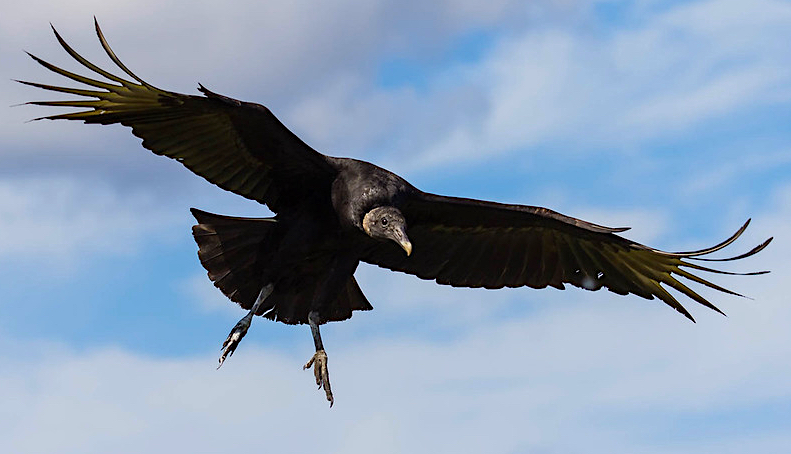
It’s all for one and one for all in ABV communities. When one bird hones in on area in need of garbage collection and begins to descend, the rest of the scrap-heap squadron will be on her tail, ready to pitch in and tidy things up, tout suite.
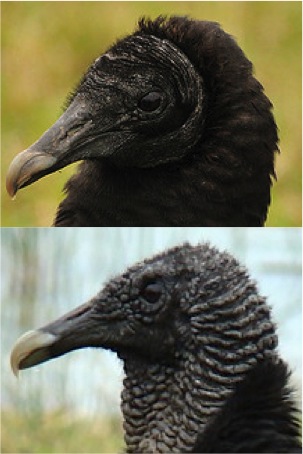 Every clean-up crew needs a uniform — something that hides stains while providing a little protection from the elements. Baggy-butt coveralls? No, thank you! Feathers provide insulation from both hot and cold weather. Not to mention, how can you beat basic black for low maintenance and classic sophistication? Add to that a generous cowl neckline that can be pulled up to cover a bare pate, or down when it’s time to dive into a decontamination chore head first, and you’ve got a versatile and hygienic fashion statement.
Every clean-up crew needs a uniform — something that hides stains while providing a little protection from the elements. Baggy-butt coveralls? No, thank you! Feathers provide insulation from both hot and cold weather. Not to mention, how can you beat basic black for low maintenance and classic sophistication? Add to that a generous cowl neckline that can be pulled up to cover a bare pate, or down when it’s time to dive into a decontamination chore head first, and you’ve got a versatile and hygienic fashion statement.
ABV might not strike you as endearing creatures but I have a soft spot for these scavengers. Back when I was living in Texas and had my wildlife rehabilitation permits, I received a nestling from the Texas A&M College of Veterinary Medicine. The little fellow reminded me of an old boyfriend — never mind why — so I christened him Jay and, unbeknownst to my landlord, turned the kitchen of my one-bedroom apartment into a vulture nursery.
These birds don’t waste time building nests, preferring to lay and incubate their eggs on bare ground. I assume my vinyl flooring must have seemed reassuringly familiar to my little Jay-bird.
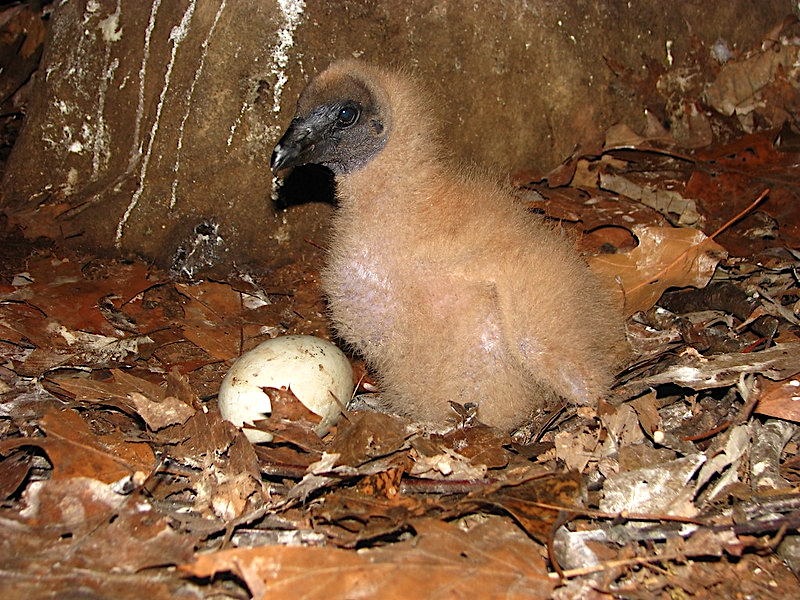
Once he was stabilized, I began to look for rehabilitator elsewhere in the state who had experience working with this species. ABVs are more social than turkey vultures (Cathartes aura), another member of the New World Cathartidae Family, so finding some siblings for this fuzzy beige “only child” was a high priority.
Unfortunately — or maybe it’s a good thing — vulture chicks aren’t common patients at wildlife rehabilitation centers. I don’t know if this is because these birds have small families, or because vultures are cautious parents who raise their young out of the spotlight of human activity, or maybe people are less likely to rescue a bird they think of as a harbinger of death.
As a result, it took several months to find a new foster parent for Jay. During that time, I learned there’s more to these dumpster-divers than meets the eye.
For example, Jay investigated everything with that endlessly curious beak. Each evening, as I stood barefooted at the open refrigerator door, scanning the shelves for something to eat, I’d see Jay’s wrinkled black head and neck stretching toward the cardboard soft drink carton so he could skillfully shred it with his forceps beak… or I’d feel a tickle and look down to see him plucking a loose thread from the hem of my pajamas. I’d smile, charmed right down to the tip of my big toe, which Jay would attempt to exfoliate, one hair at a time.
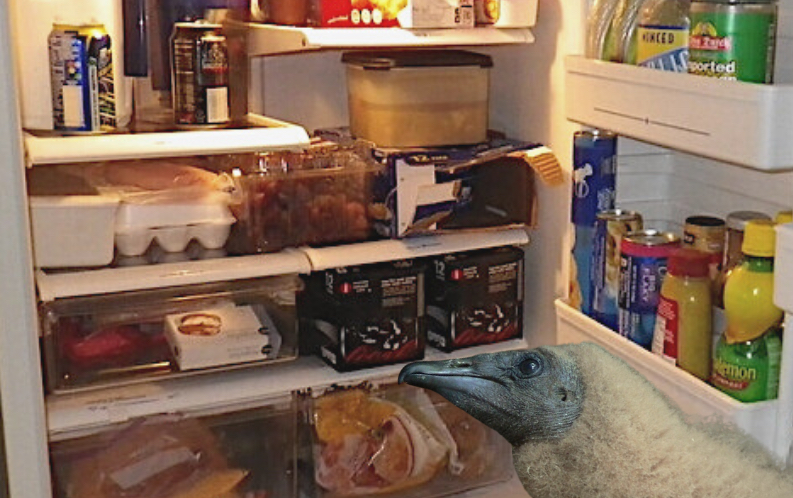
And then I would realize he was practicing for the day when he would use that clever hooked bill to tear open a carcass like a bag of Doritos… and I’d decide I didn’t really need a bedtime snack after all.
They give you nightmares, you know.
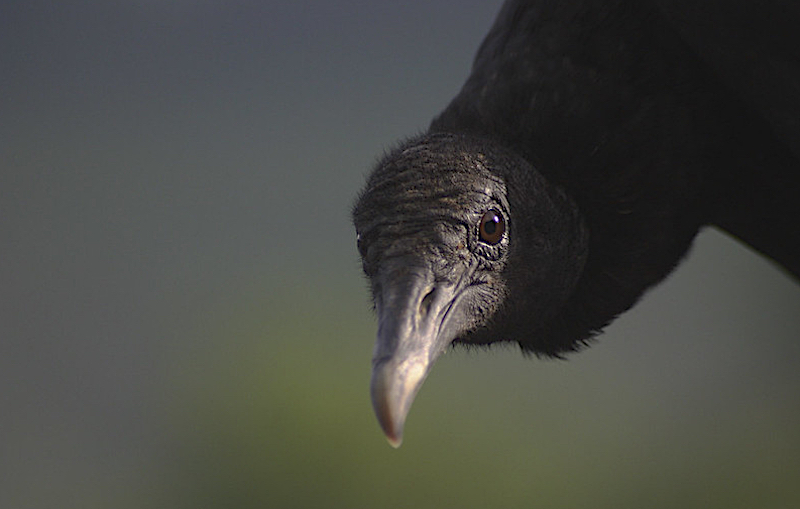
© 2011 Next-Door Nature. No reprints without written permission from the author (I’d love for you to share my work–just ask first). Thanks to Emilie Chen, Andrew Reding, Montgomery County Planning Commission, Richard Bonnett, Gregory Moine, Greg Gilbert, Anita363, and Brian Gratwicke who made their photos available for use under a Creative Commons license.
